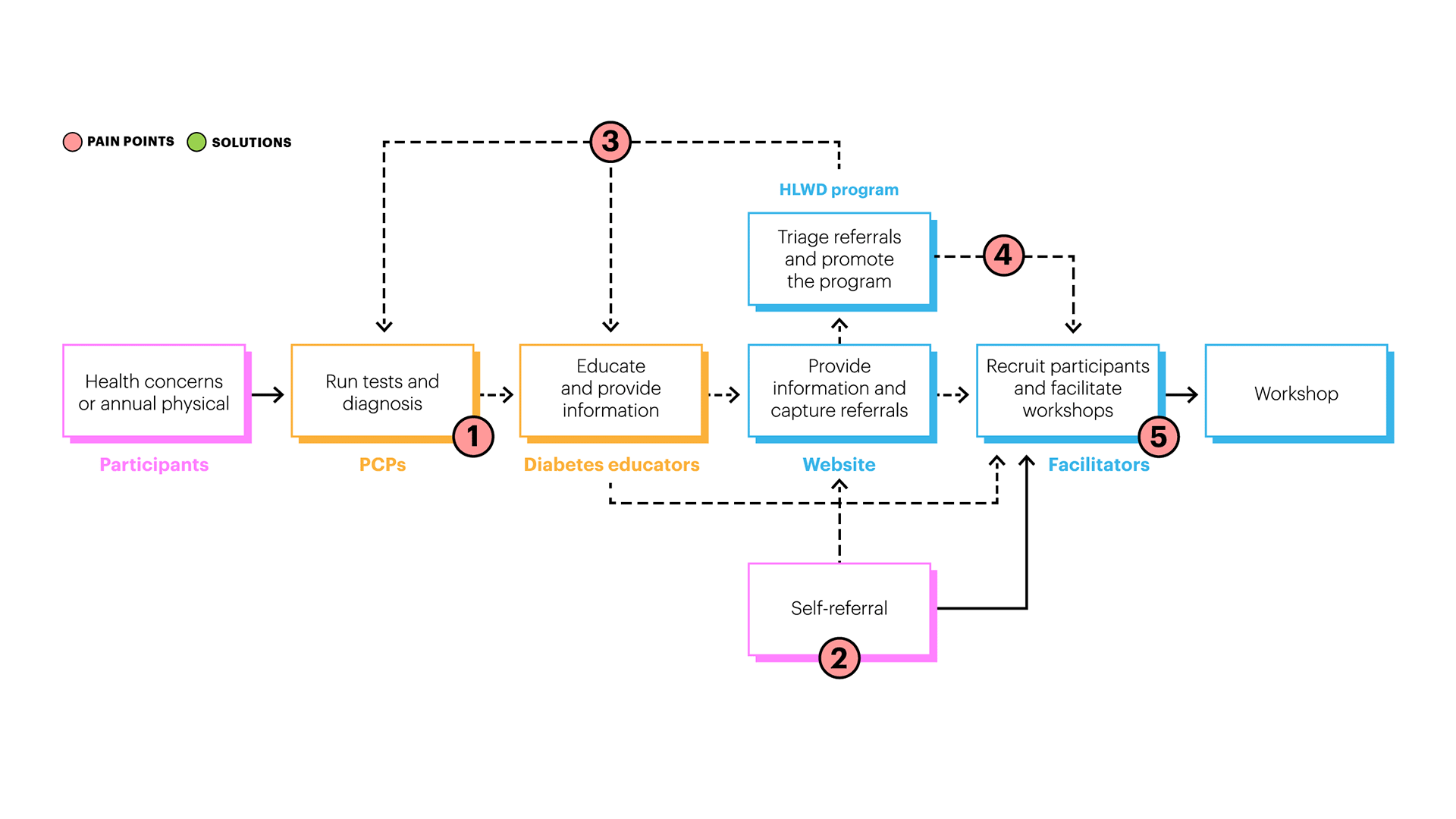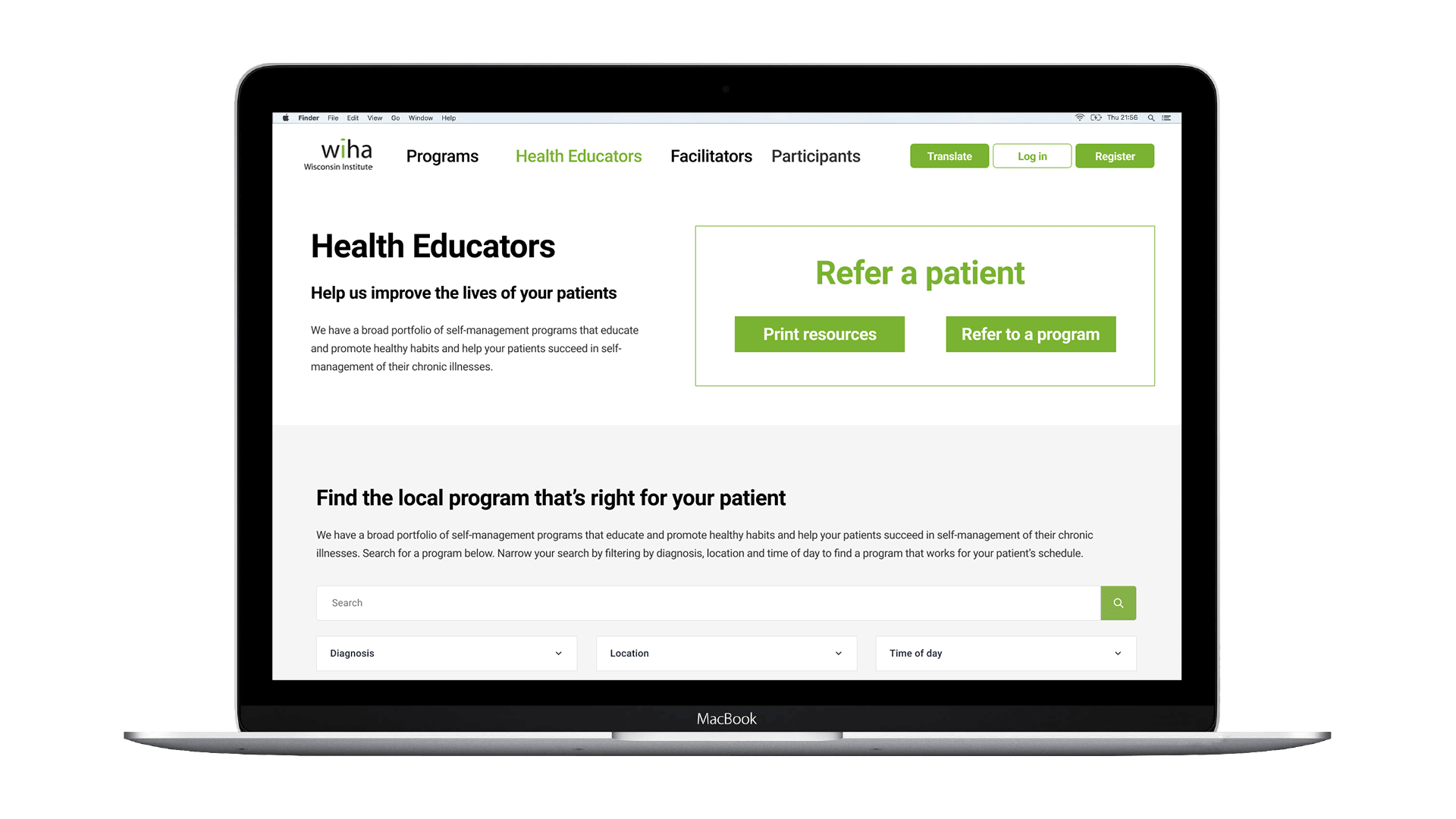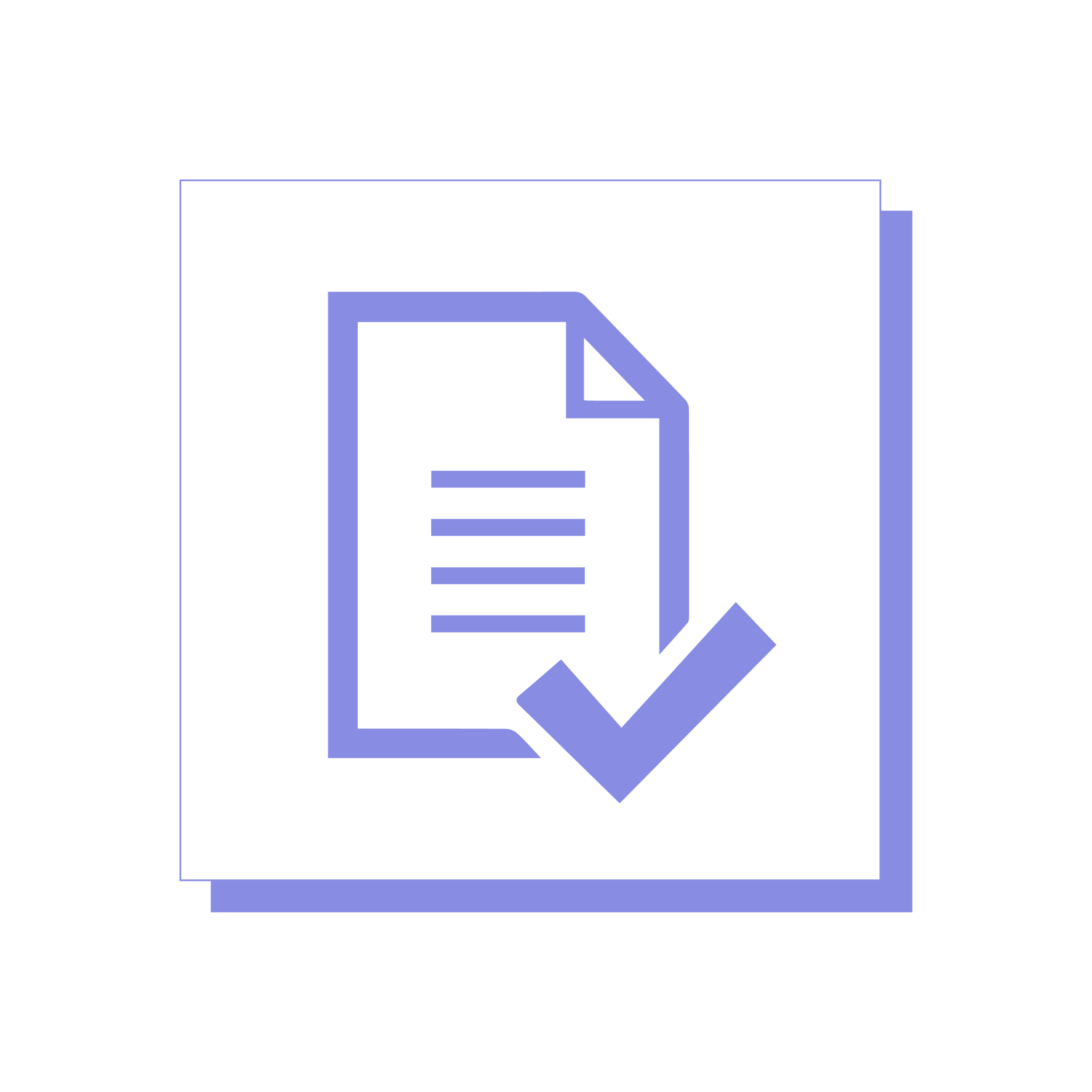
Organization & Service Design
Healthy Living with Diabetes
Design impact is defined by marrying inclusivity with form and function and tying that to business and societal issues.
Diabetes is a huge problem in the United States. Today, 30% of American adults have this chronic illness. African Americans experience a 77% higher risk of diabetes than White, non-Hispanic Americans. Self-management programs lead to improved self-efficacy and symptom management for participants. These resources are impactful, but many health professionals are unaware of such local initiatives, leading to a lack of referrals and participation among newly diagnosed patients.
Our client, the Wisconsin Institute for Health Aging (WIHA), is the Wisconsin license holder for the Stanford-developed Healthy Living with Diabetes (HLWD) program. I led a team of four to apply the Stanford d.school Design Thinking methodology — empathize, define, ideate, prototype, and test — to develop a solution that reduces barriers for communities of color to gives patients a clear path to a healthy life.
Time 10 weeks
Team 4 people
Tools Miro, Illustrator, InDesign, Figma
Role team lead, creative director, project manager, user research, designer, prototyping, testing
-
Learn about the audience for whom you are designing by observation and interview.
Who is my user? What matters most to this person?
-
Create a point of view based on user needs.
What are their needs?
-
Brainstorm as many creative solutions as possible.
Wild ideas are encouraged!
-
Build a representation of your ideas to show others.
-
Share your prototyped idea with your original user for feedback.

How might we improve the reach of diabetes self-management education in Wisconsin, specifically among the Black population?
Empathize
Interviews
We conducted 21 interviews of four user personas — participants, facilitators, community advocates, and health professionals — to understand their experience with the program and illness.
-
Person who has been diagnosed with diabetes
When were you diagnosed? Walk us through that moment. When did you enroll in the program? How were you referred? What was your experience like? Would you recommend HLWD?
“I was in shock... I didn’t know what it would mean for me. I wanted it gone immediately. After taking medication, I knew I needed to make other changes to my life, but that didn’t happen right away.”
-
Past participant and / or person who has diabetes
What led you to facilitating? What does the commitment look like? Walk us through a workshop. How is the content structured and delivered? How do you bridge language and literacy barriers? How are participants referred?
“HLWD isn't presented in a way you can be diverse with the information, which makes it hard to jump out and meet participants where they're at versus being able to adjust as needed.”
-
Social worker, community partner, or WIHA employee
Tell us what you know about HLWD. How did you find out about the program? Do you refer patients to it? What management strategies do you recommend to patients? What other issues do they typically have?
“The workshops are beneficial but it doesn’t target the people that it needs to target. It’s designed for older adults, but majority of participants are middle aged people. The flow of the workshop doesn’t allow participants to engage with one another in either breakout conversations or activities.”
-
Doctor or nurse educator
Walk us through a patient visit. How do you build trust with patients? What tools or strategies do you recommend to manage their illness? Do you know about HLWD? How do you refer patients to the program?
“I define trust building as the art side of medicine... understanding the health literacy of a patient is key to get a sense for where they are. I don’t know about HLWD. Nurse educators are responsible for providing self-management tools and referrals, but they might not know about the program either.”
Desktop research
What is diabetes? How does it effect the body? How can it be managed? What resources are available? What’s in the HLWD facilitator guidebook? How is a workshop structured?
Analogous research
What other programs are available? How do they bridge language and literacy barriers? What analogous social programs increase retention and “socially engineer” their organization?
Experiential and journey mapping
We drew serving and portion sizes on plates, exercised and ate like a diabetic, and tried to keep an insulin-sized bottle cold for a day to try understanding what it’s like to have the illness.
Define
Identifying opportunities
MEDIUM IMPACT, LOW RESOURCES
HIGH IMPACT, MEDIUM RESOURCES
LOW IMPACT, HIGH RESOURCES

Opportunity area #2: An informed and engaged diabetes health educator
How might we... deepen HLWD’s brand presence to engage and inform diabetes health educators to bridge the gap between patient diagnosis and self-management?
Systemic analysis of WIHA’s online presence
Prototype
Opportunity area #2 an engaged and informed health educator
A redesigned WIHA website to engage health educators and provide them with patient resources

“This landing page is great! We’re always looking for patient resources, but we try to use phrases like ‘take action’ instead of ‘take control’. Also consider adding age and gender selections to the customized print resource.”
— Kim, a health educator
A reimagined online experience for health educators

Impact
“The research developed by CommuniTeam will be used as a main strategy in a grant proposal to enhance the reach and uptake of diabetes self-management among African Americans.”
— Dr. Olayinka O. Shiyanbola, PhD, BPharm
Next steps
Internal validation
Share proposed solution with the organization specifying the context and scope of the initial analysis
Compliment analysis and design
Identify who will be responsible for maintaining each component of the proposed design
Final stakeholder validation
Perform one more round of testing with each stakeholder — health professionals, facilitators, and participants — and incorporate feedback into the final design
Prioritize changes
Develop and implement new features in order of priority:
1 Health educator page
2 HLWD page
3 WIHA home page
4 Facilitator page
5 Participant page
6 Customized print resource
7 Referral system
8 Workshop signup
Meet the team
-

Emily Phelan
TEAM LEAD + CREATIVE DIRECTOR
-

Efrain Rivera
DESIGN DETECTIVE
-

Britta Grayvold
UX DESIGNER
-

Seneida Biendarra
SYSTEMS DESIGNER











